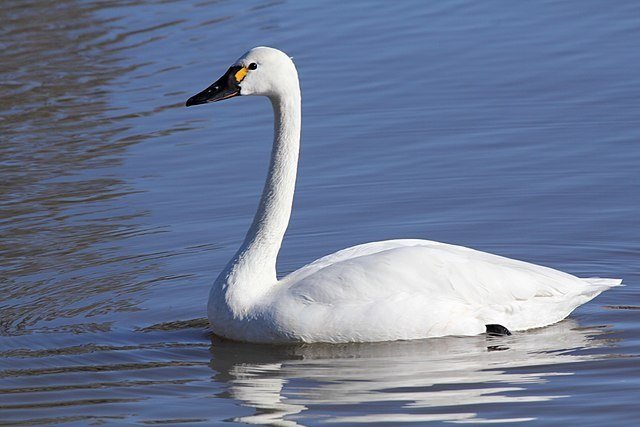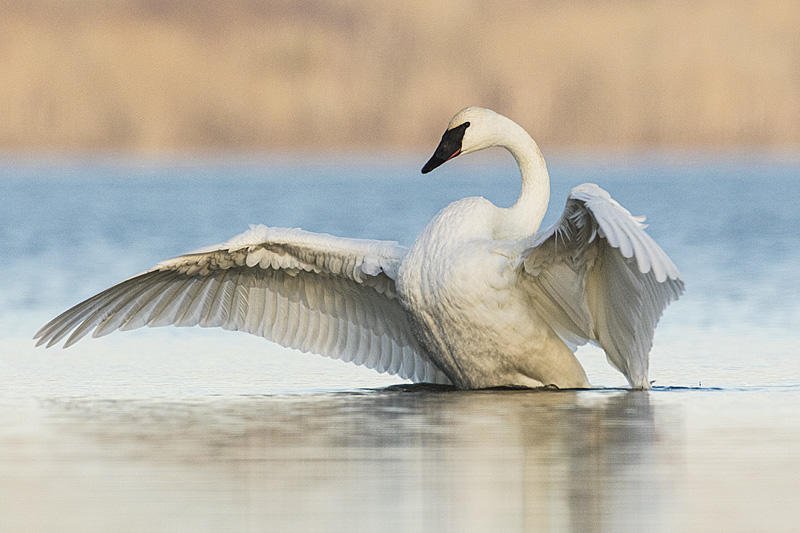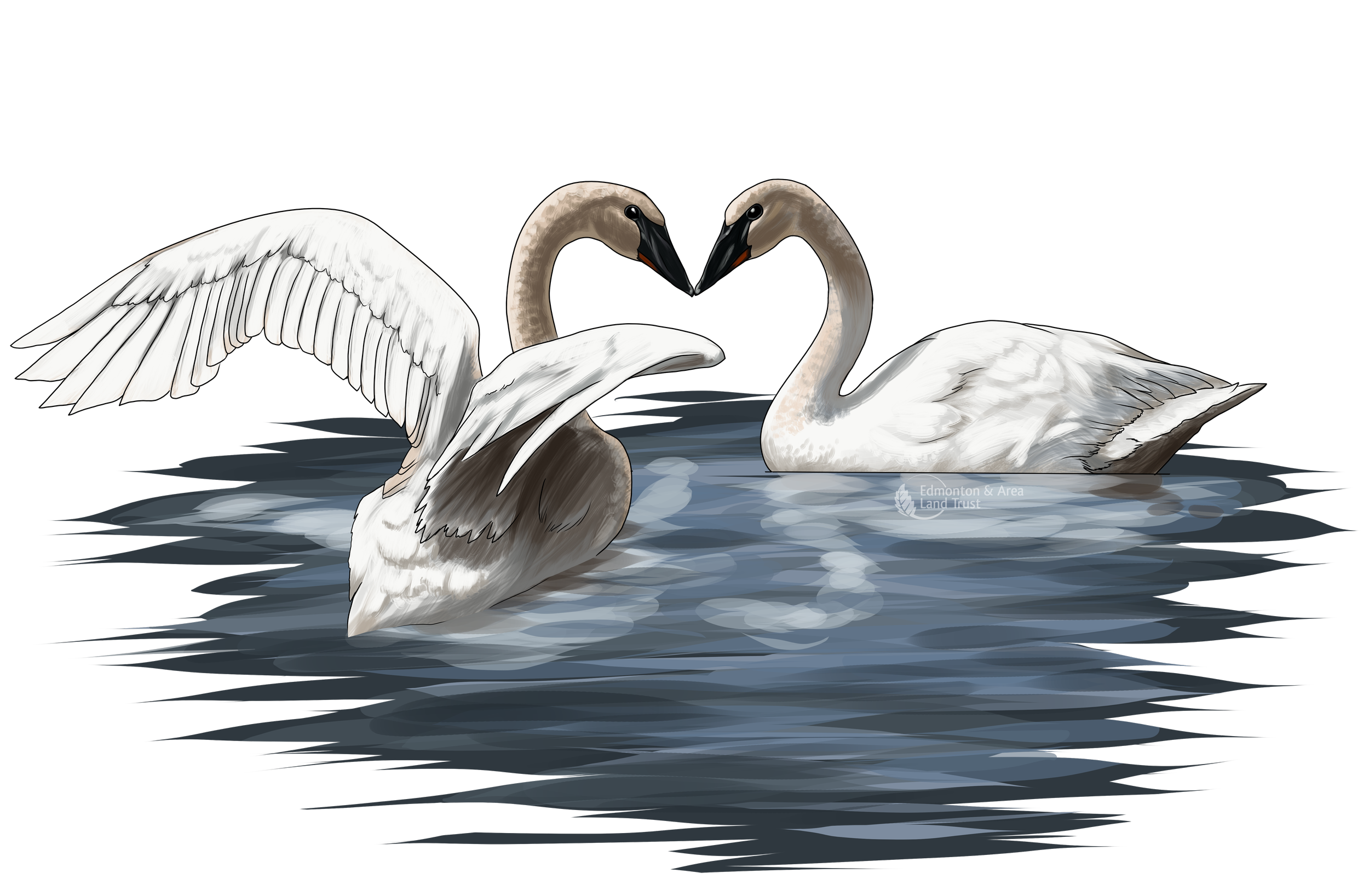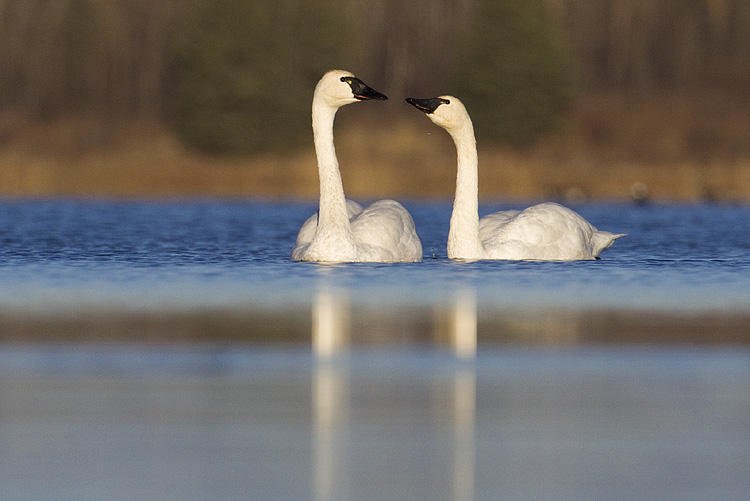As the year starts to bud and January turns to February, Valentine’s Day is just around the corner. February in some parts of the world may herald the arrival of spring, but those of us living in Canada know that we likely have a few more weeks of winter winds and snow to look forward to.
This is also the time when our migratory birds are making their way up from the south! As we anticipate their arrival, let’s take a look at some of the “romantic” practices of our migratory avian residents.
Swan Sweethearts
When one thinks of love in the animal kingdom, they almost inevitably think of a few animals, and among those creatures is usually the swan. Canada has 2 native swans, the Tundra and the Trumpeter swan. Their reputation for being “lovebirds” is well-earned: both of these birds often form a pair bond for life. These pairs are forged when the swans are young adults, usually between the ages of 3 and 6. Swans can live until they’re up to 30 years old, so finding the right one for them is no trivial endeavour!


Photo credits: Tundra swan (L) Dominic Sherony, CC SA 2.0. Trumpeter swan (R) Gerald Romanchuk.
Above: A Tundra swan (left), and a Trumpeter swan (right). These can be distinguished by a small patch of yellow beneath the eye on the Tundra swan.
To win the affection of their chosen partner, Trumpeter swans court by swimming alongside each other, usually with the male “bumping” the female with his breast on her flank, with both bobbing their heads. They then face each other, sometimes even making the iconic “heart” shape between their two graceful necks.
Image credit: Gerald Romanchuk
Tundra swans usually face each other, vocalizing one after the other in quick succession, all while half-flapping their wings, which eventually results in a larger wing-flare once the ritual is complete. Tundra swans don’t nest directly after finding a mate, instead staying together during the first breeding season without producing a nest. They do, however, protect a territory in this time, and actively drive away any interlopers. This bond is tight and carefully maintained, often lasting for up to 15 years or more.
Image credit: Gerald Romanchuk
Swans are highly social and complex animals, and in the past, were critically endangered in North America. At one point, only 77 breeding pairs were known to exist in Canada. Today, the continent has a population of 16,000 individuals - a remarkable rebound from a precarious brush with extinction. Both species rely on a stable nesting territory, however, and are even known to return to exactly the same nest years in a row. Because of this, they are sensitive to habitat loss and disturbance.
Doves of love?
Another bird that may come to mind when thinking of romance in the animal kingdom is the dove. Often released at weddings, they have also come to symbolize peace and harmony in the new relationship. The only dove native to Alberta is the Mourning dove, one of the most common in North America. Though not white in colour, they are still charming birds whose calls are easily recognizable and add an integral thread of sound to the tapestry of Alberta’s birdsong chorus.
Image credit: Tom Koerner, Public Domain
Mourning dove pairs also tend to stay exclusive, but there may be exceptions. Some birds only pair up for the breeding season but are still strongly devoted to their partner. Their courtship behavior can be recognized by the characteristic call of the male looking for a mate.
Emblematic Animals
Image credit: Andy Reago & Chrissy McClarren, CCA 2.0
Humans tend to admire animals who display monogamous tendencies when thinking about animals that represent love, but the animal kingdom rarely sticks to absolutes. For example, if a swan’s mate dies, they may go on to seek another, and in the case of the Mourning dove, they may seek a new partner every year.
The birds we’ve talked about here are typically monogamous, but that is a soft rule rather than a hard one. The Mourning dove, Tundra swan, and Trumpeter swan are all examples of amazing fidelity within the animal kingdom, and how strong partnerships and relationships can overcome the struggles faced by wild birds. One can’t help but take inspiration from them.
Want to have an in-person experience with these animals? Swans and Mourning doves have been seen at two of our conservation lands, Lu Carbyn Nature Sanctuary and JBJ McDonald Conservation Land. These two lands are right next to each other, located near Lac Ste. Anne.
You can also contribute to our Citizen Science program which is currently accepting applicants. Click the button below to sign up.






